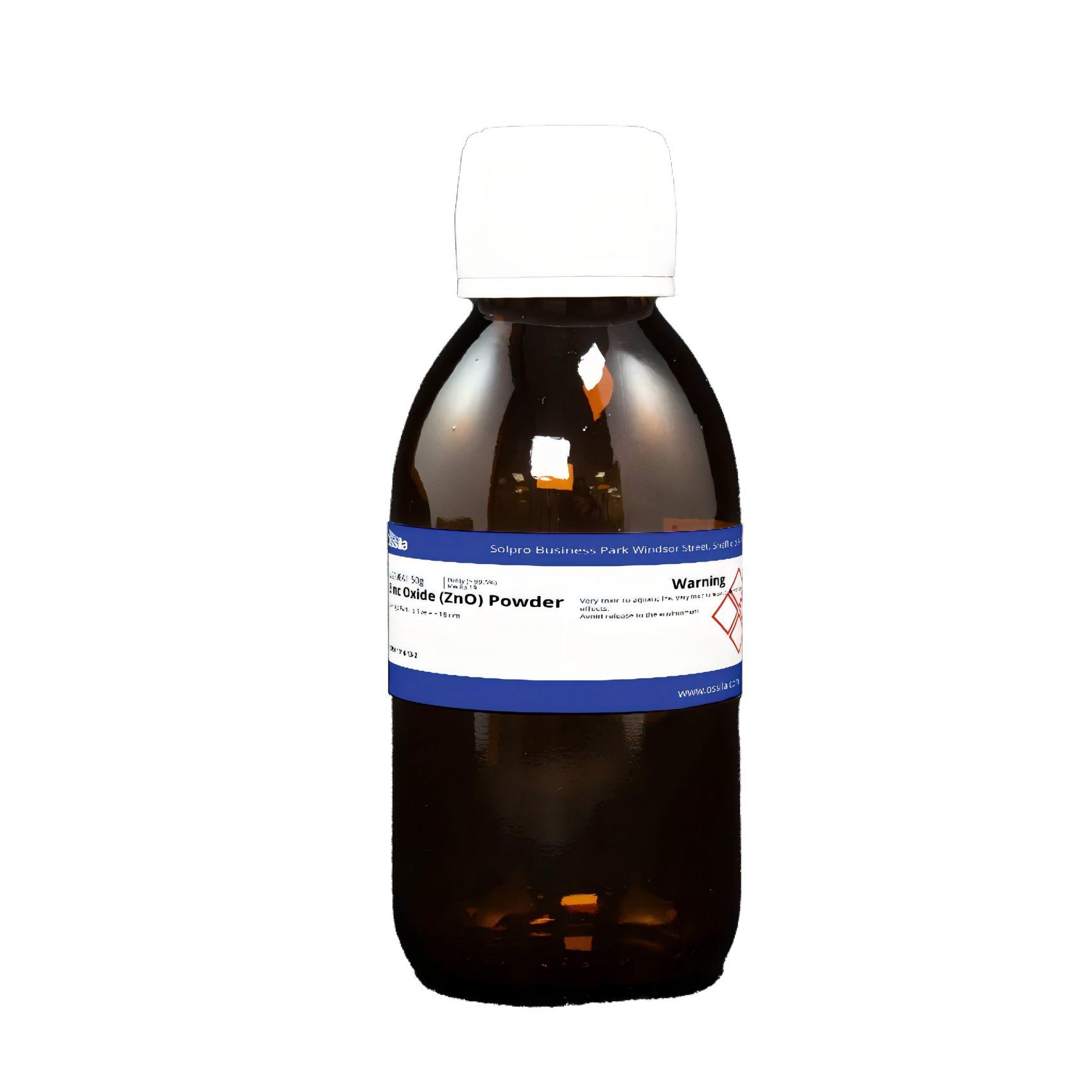
Insoluble in water, zinc oxide nanoparticles are normally in the form of a white powder with the chemical formula ZnO. Zinc oxide is an n-type semiconducting metal oxide with a direct band gap of 3.37 eV, large excitation binding energy (60 meV) and deep violet/borderline ultraviolet (UV) absorption at room temperature.
Zinc oxide nanoparticles possess favourable electrical, mechanical, and optical properties and are suitable wide range of applications from electronics, cosmetics, food to biomedicines. As an additive, ZnO has been added to pigments, sealants, ointments, adhesives, lubricants, plastics, paints, fire retardants, rubber, cement, glass and ceramic to either enhance their physical properties. Owing to its high thermal and mechanical stability at room temperature and piezo- and pyroelectric properties, ZnO has been applied in the fields electronics, optoelectronics, laser, photocatalyst, energy generator and sensor. With relatively high biocompatibility, ZnO nanoparticles have an inherent nature of showing selective cytotoxicity against cancerous cells in in vitro condition compared with other nanoparticles.
Zinc oxide nanoparticles can be produced on a large scale at low cost by simple solution-based methods such as chemical precipitation, sol-gel synthesis, and solvothermal/hydrothermal reaction. zinc oxide nanoparticles synthesised by using the environmentally benign extract of the aerial parts of D. tortuosa as a reducing and capping agent, showed an attractive selective cytotoxic activity in cancer therapy.
Technical Data
CAS Number 1314-13-2
Chemical Formula ZnO
Molecular Weight 83.19 g/mol
Chemical Name Zinc oxide
Synonyms Zinc monoxide, Zinc white
Classification / Family 2D semiconducting materials, nanomaterials, Solid lighting, metal oxides
Colour White powder
Zinc Oxide (ZnO) Nanoparticles
Product Code M2398B1
Average Particle Size 20 – 30 nm
Specific Surface Area N/A
Melting Point 1975 °C
Purity ≥ 99.8%